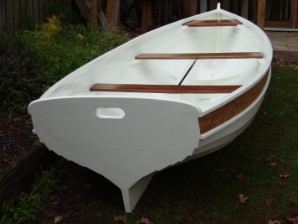They may look the same but the wiring inside is changed.
Read below.
MHU 496 to B&G Network Wind repeater March 25, 2013
Having two B&G 496 mast head units in stock but with one having a broken lower
Thread where the wind speed cups fit and the other in as new condition, I had decided
To build one decent MHU from the two, excepting when the 213 PC board was changed over
Fuzzy logic often works for me, this is my sketch of each wire to connections, yours may of course be different again?
It would not work on the better mast head stalk housing, why?
Early mast head units # 496 had a different pin arrangement and a change of wire
Colour on one wire, this means you cannot take a 496 PC board from the early units
And fit in the later units.
Numbers:
Early 496-00-001-N175018 this has six wires servicing the wind speed and wind Angle
Purple,blue,green,black,red, orange.
Note the 213 code on the main PCB, this is from the earlier 213 mast head unit but the 496 MHU has a second board soldered in, so they are not a direct swop.
I decided to do a circuit test and see if the wires were connected end to end, with a meter Set to alarm, I started my test. There are six pins, where the sender fits, I used the center one as the number one, then working clockwise I checked off the other five pins, noting their colour and if the continuity was fine.
The red and yellow wires needed changing over.
I then did a sketch of each end and drew as I checked marking the number and colour, I soon had the test proven and to my surprise both units checked out fine. What was changed was one unit had a yellow wire, while the other an orange wire, which in itself is no big deal but what was also changed was that pin five had been changed to six. I was able to change these over, testing the unit when assembled gave me both wind angle and wind speed, success!
The part number on this assembly is
496-10-002
Now re assembled I have a decent 496 MHU, when tested on a spare Network Wind instument , I found the fix worked.
Maybe this simple fix will work for others?
Try this link to see what the B&G 213 MHU looks like inside
http://primus.bandg.com/icrbg/BandG%20FAQs/H2000%20FAQS/FAQ%20-%20213%20MHU%20PCB%20Swap.pdf
Roy
Pictures will follow.


















































